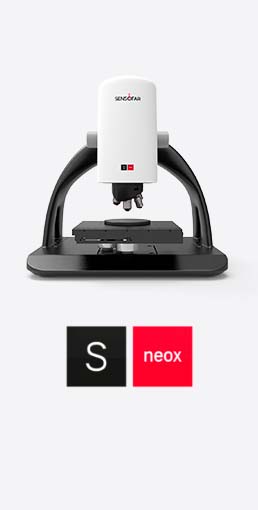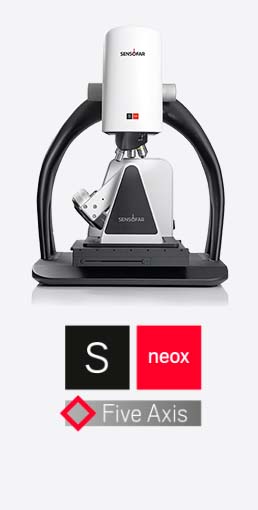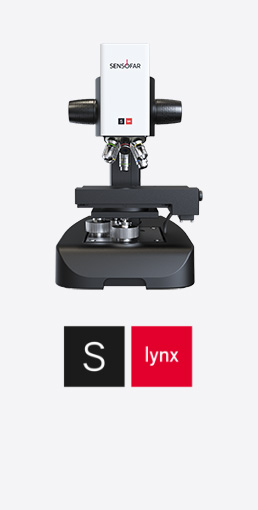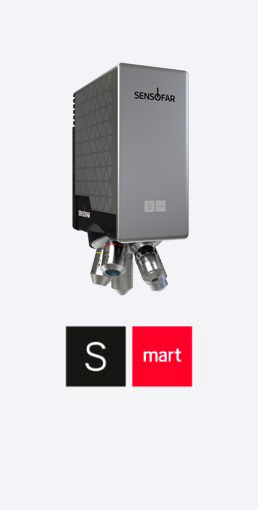
Sensofar Fokusvariation
The Focus Variation optical technology has been developed for measuring the shape of large, rough surfaces. It is based on Sensofar’s extensive expertise in the field of combined Confocal and Interferometric 3D measurements, and is specifically designed to complement Confocal measurements at low magnification.
BACKGROUND
Prinzip der Fokusvariation
The Focus Variation technology takes advantage of the limited depth of focus in brightfield images, where only a certain z-range of the sample is in focus. This value changes depending on the numerical aperture of the objective or the light source wavelength. The Z value is calculated measuring the high frequency components (sharpness or tiny details) of the image, resulting in the optimal focus position.
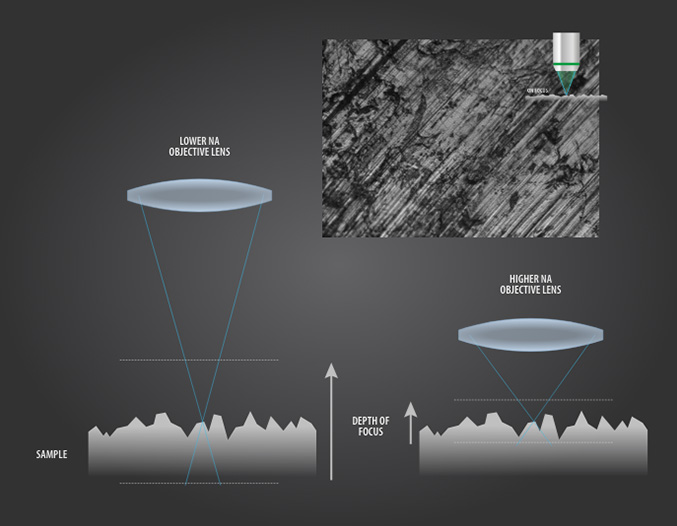
OPTICAL SCHEME
The optical scheme based on our patented microdisplay technology shows the light passing through different optical elements from the light source (LEDs) up to the camera. In that case, the microdisplay works like a mirror (100% reflectivity). This optical scheme is like a standard video microscope. Bright field images can be captured in every plane by performing a vertical scan.
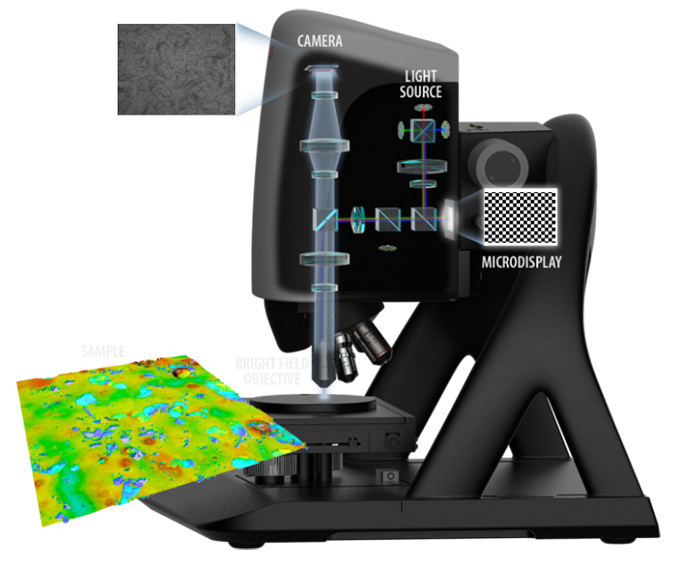
PROPRIETARY ALGORITHMS
Die Limitationen der Fokusvariation überwinden
On non-textured surfaces, the focus operator does not provide enough signal to recognize the best focus position. This is typically the case on optically smooth surfaces, providing noisy 3D results. Sensofar systems have been improved with the use of active illumination to get more reliable focus location even on optically smooth surfaces where the focus operator does not provide enough signal, because of poor contrast. Now, the microdisplay projects an artificial texture (chess board pattern).
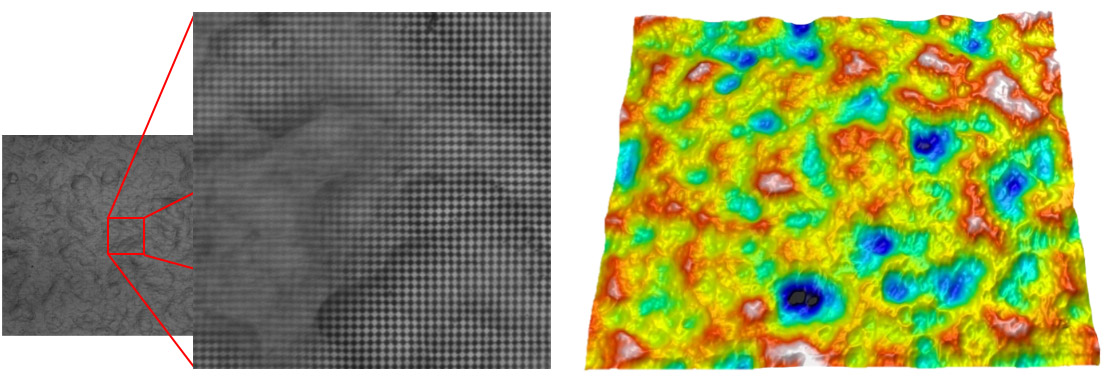
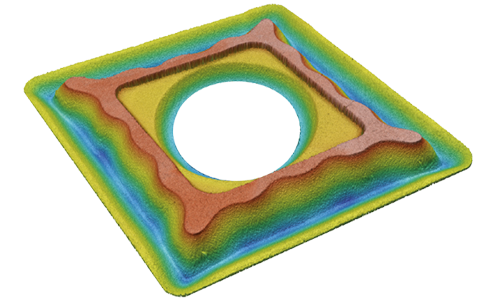
KEY FEATURES
Highlights of the technology include high slope surfaces (up to 86°), high speed (up to 3mm/s) and large vertical range measurements.
Measures slopes up to 86º on scattering surfaces
Active illumination allows measurement on smooth surfaces
Fast acquisition, 200 planes in 3 seconds
Multiple light sources




